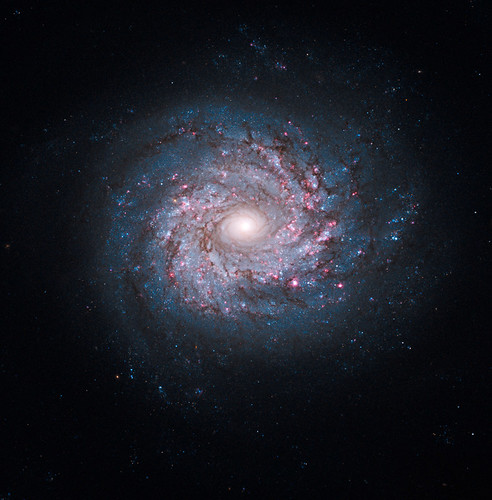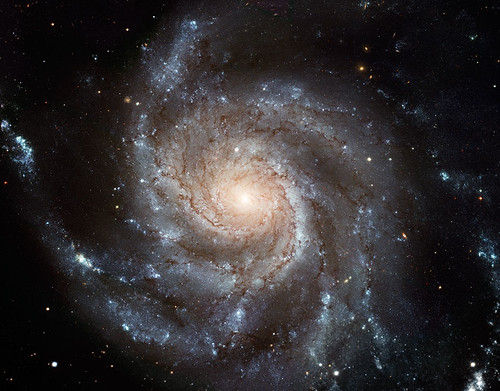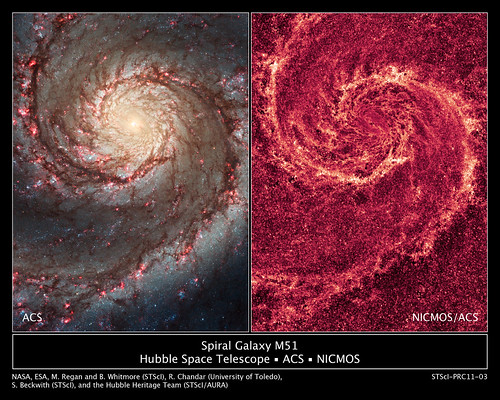Galaxy Face-off
- By Maggie Masetti
- January 2, 2014
- Comments Off on Galaxy Face-off
I recently stumbled across this gorgeous image of NGC 4921, so I thought perhaps a post showing a selection of gorgeous face-on galaxies would be in order.
First up, the aforementioned barred spiral, NGC 4921. Note its bright nucleus, the bright central bar, and the ring of dark dust. Outside of the dust ring are blue clusters of young stars. View the NASA feature.

Credit: Hubble Legacy Archive, ESA, NASA
Next up is NGC 3982, also rich in star birth. The arms of this galaxy are lined with star-forming regions of glowing hydrogen (depicted in pink), along with clusters of newborn stars (in blue). Dust lanes obscure some of the stellar nurseries even as the dust provides new material for future stars to be born. An older population of stars is present in the nucleus. Read more on Hubblesite.

Credit: NASA, ESA, and the Hubble Heritage Team (STScI/AURA)
Here is a spectacular image of M101, the Pinwheel Galaxy. It’s made of a mosiac of images from three different telescopes, as well as 51 exposures from two different Hubble Space Telescope instruments, taken at five different times.
Again dust lanes amongst the spiral arms are easily visible, and the arms are dotted with bright regions of star formation. The stars near the bright nucleus are older and redder than the young, blue, hot stars in the star forming regions along the galaxy arms. Read more on Hubblesite.

Credit for Hubble Image: NASA, ESA, K. Kuntz (JHU), F. Bresolin (University of Hawaii), J. Trauger (Jet Propulsion Lab), J. Mould (NOAO), Y.-H. Chu (University of Illinois, Urbana), and STScI;
Credit for CFHT Image: Canada-France-Hawaii Telescope/ J.-C. Cuillandre/Coelum; Credit for NOAO Image: G. Jacoby, B. Bohannan, M. Hanna/ NOAO/AURA/NSF
Last for now is this double image of M51. Both are from the Hubble Space Telescope. The image at left shows the galaxy in visible light. Again there are arms dotted with star-forming regions (in pink) and blue clusters of young stars. At right is the galaxy in near-infrared light. Most of the starlight has been removed showing the “skeleton” of dust underneath. See the full story on Hubblesite.

Credit for the NICMOS Image: NASA, ESA, M. Regan and B. Whitmore (STScI), and R. Chandar (University of Toledo); Credit for the ACS Image: NASA, ESA, S. Beckwith (STScI), and the Hubble Heritage Team (STScI/AURA)


